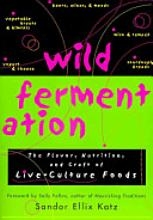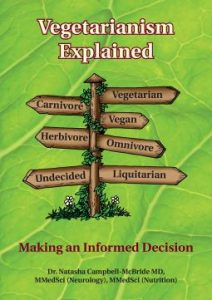Description
Most people consume fermented foods and drinks every day. For thousands of years, humans have enjoyed the distinctive flavors and nutrition resulting from the transformative power of microscopic bacteria and fungi. Wild Fermentation: The Flavor, Nutrition, and Craft of Live-Culture Foods is the first cookbook to widely explore the culinary magic of fermentation.
“Fermentation has been an important journey of discovery for me,” writes author Sandor Ellix Katz. “I invite you to join me along this effervescent path, well trodden for thousands of years yet largely forgotten in our time and place, bypassed by the superhighway of industrial food production.”
The flavors of fermentation are compelling and complex, quite literally alive. This book takes readers on a whirlwind trip through the wide world of fermentation, providing readers with basic and delicious recipes-some familiar, others exotic-that are easy to make at home.
The book covers vegetable ferments such as sauerkraut, kimchi, and sour pickles; bean ferments including miso, tempeh, dosas, and idli; dairy ferments including yogurt, kefir, and basic cheesemaking (as well as vegan alternatives); sourdough bread-making; other grain fermentations from Cherokee, African, Japanese, and Russian traditions; extremely simple wine- and beer-making (as well as cider-, mead-, and champagne-making) techniques; and vinegar-making. With nearly 100 recipes, this is the most comprehensive and wide-ranging fermentation cookbook ever published.
The process of fermenting foods—to preserve them and to make them more digestible and more nutritious—is as old as humanity. From the Tropics—where cassava is thrown into a hole in the ground to allow it to soften and sweeten—to the Arctic—where fish are customarily eaten “rotten” to the consistency of ice cream—fermented foods are valued for their health-giving properties and for their complex tastes. Unfortunately, fermented foods have largely disappeared from the western diet, much to the detriment of our health and economy. For fermented foods are a powerful aid to digestion and a protection against disease; and because fermentation is, by nature, an artisanal process, the disappearance of fermented foods has hastened the centralization and industrialization of our food supply, to the detriment of small farms and local economies.
The taste for fermented foods is usually an acquired taste. Few of us can imagine eating fermented tofu crawling with worms, which is relished in parts of Japan, or bubbly sorghum beer, smelling like the contents of your stomach, which is downed by the gallons in parts of Africa. But then, few Africans or Asians can enjoy the odiferous chunks of rotten milk (called cheese) that are so pleasing to western palates. To those who have grown up with fermented foods, they offer the most sublime of eating experiences—and there are many that will appeal to western tastes even without a long period of accustomization.
In the spirit of the great reformers and artists, Sandor Katz has labored mightily to deliver this opus magnum to a population hungry for a reconnection to real food, and to the process of life itself. For fermented foods are not only satisfying to eat, they are also immensely satisfying to prepare. From the first successful batch of kombucha, to that thrilling bubbly pop when the lid is removed from a jar of homemade sauerkraut, the practice of fermentation is one of partnership with microscopic life. This partnership leads to a reverence for all the processes that contribute to the well being of the human race, from the production of enzymes by invisible bacteria to the gift of milk and meat from the sacred cow.
The science and art of fermentation is, in fact, the basis of human culture—without culturing, there is no culture. Nations that still consume cultured foods, like France with its wine and cheese, and Japan with its pickles and miso, are recognized as nations that have culture. Culture begins at the farm, not in the opera house, and binds a people to a land and its artisans. Many commentators have observed that America is a nation lacking culture—how can we be cultured when we only eat food that has been canned, pasteurized and embalmed? How ironic that the road to culture in our germophobic technological society requires, first and foremost, that we enter into an alchemical relationship with bacteria and fungi, and that we bring to our tables foods and beverages prepared by the magicians, not machines.
Wild Fermentation represents not only an effort to bring back from oblivion these treasured processes, but also a road map to a better world, a world of healthy people and equitable economies, a world that especially values those iconoclastic, free-thinking individuals—so often labeled misfits—uniquely qualified to perform the alchemy of fermented foods.





